Welcome to South Tyrol, a region in Italy renowned for its abundant birdlife! South Tyrol is home to a wide variety of bird species, many of which are unique to the area. From the majestic golden eagle to the tiny alpine accentor, South Tyrol is a paradise for birdwatchers.
With its towering mountains, lush meadows, and diverse habitats, South Tyrol is an ideal place for spotting birds. Whether you’re a beginner or an experienced birder, South Tyrol has something to offer. So grab your binoculars and come explore the amazing birdlife of South Tyrol!
1. Black-Winged Stilt
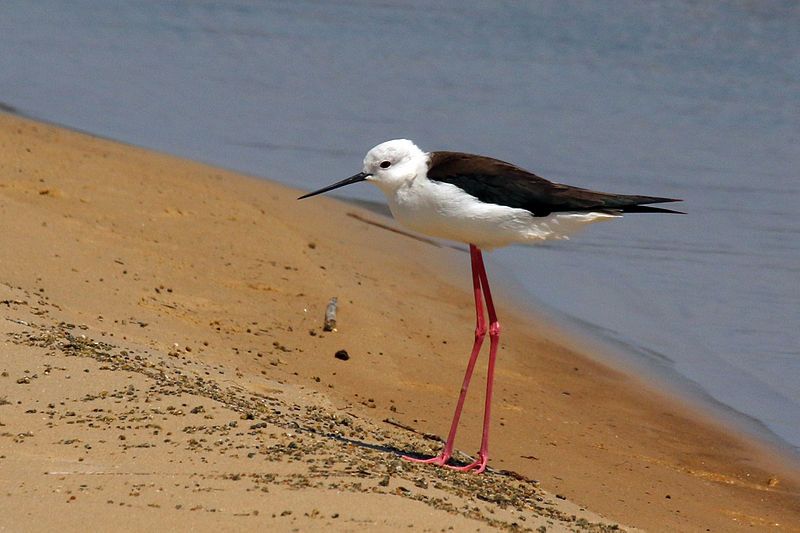
The black-winged stilt is a species of wading bird that is found in many parts of the world. It is a member of the avocet and stilt family and is easily identified by its very long legs. The scientific name for the black-winged stilt is H.
himantopus, and it is sometimes considered to be a single, almost cosmopolitan species. This means that while the black-winged stilt may have some minor physical variations across its range, it is essentially the same species throughout much of the world.
The black-winged stilt is generally found in wetlands, particularly shallow lakes, ponds, and marshes. It feeds primarily on aquatic insects and fishes and often stands in shallow water in search of food. It nests in colonies, often on islands in marshes or other wetlands.
| Kingdom | Animalia |
| Phylum | Chordata |
| Class | Aves |
| Order | Charadriiformes |
| Family | Recurvirostridae |
| Genus | Himantopus |
| Species | H. himantopus |
2. Red-Crested Pochard
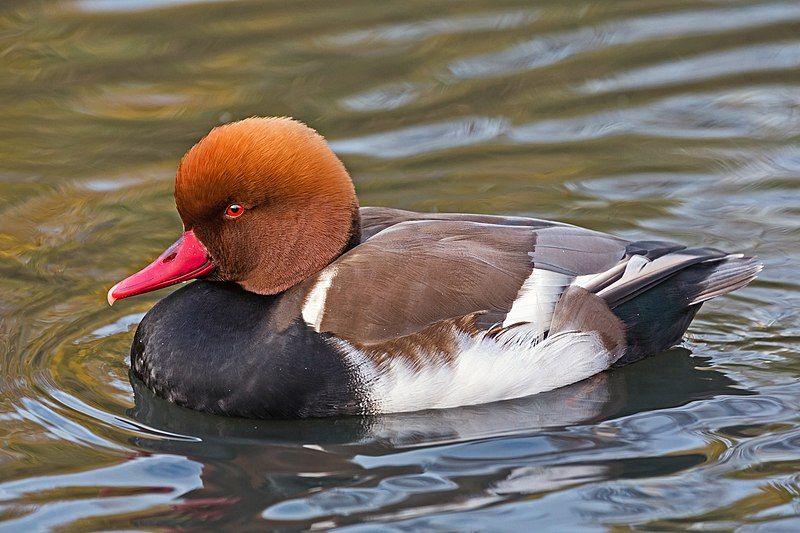
The red-crested pochard is a large diving duck found in many parts of the world. It is a species of duck in the Aythyinae subfamily of the Anatidae family, which includes all ducks, geese, and swans.
Its scientific name is derived from the Greek word Netta, meaning “duck”, and the Latin word rufina, meaning “golden-red”.
These two words together accurately describe the physical appearance of the red-crested pochard, as it has a golden-red crest and is a duck. The red-crested pochard is a medium-sized duck, with a body length of about 18-24 inches.
It has a distinctive red-brown crest on its head, as well as a white breast and black back. In terms of habitat, this species prefers shallow freshwater lakes and ponds, and can also be found in marshes, canals, and slow-moving rivers.
It feeds mainly on aquatic plants and animals, such as mollusks, fish, frogs, and aquatic insects. The red-crested pochard is a migratory species, breeding in the northern hemisphere during the spring and summer months.
It nests in groups of up to 20 individuals and lays around 8-12 eggs. The female incubates the eggs for a period of around 28 days, after which time the chicks hatch.
The young fledge at around 4 weeks old and are independent soon afterwards. Overall, the red-crested pochard is a species of duck with a striking appearance and an interesting lifestyle.
Its scientific name accurately reflects its physical characteristics, while its migratory habits and nesting behaviour further add to its uniqueness.
| Kingdom | Animalia |
| Phylum | Chordata |
| Class | Aves |
| Order | Anseriformes |
| Family | Anatidae |
| Genus | Netta |
| Species | N. rufina |
3. Common Moorhen
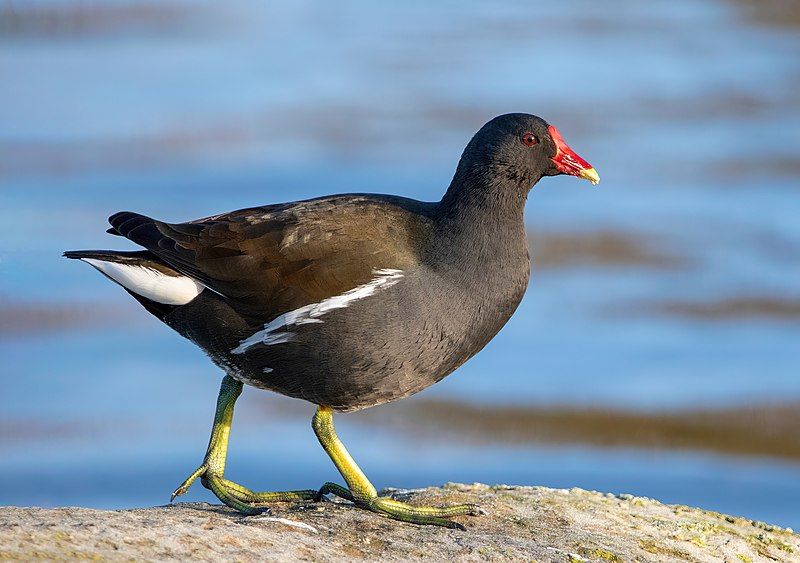
The common moorhen (Gallinula chloropus) is a species of bird in the rail family. It is found across many parts of the Old World, including Europe, Africa, and parts of Asia and Australia.
Common moorhens favor wetland habitats such as marshes, ponds, canals, and other areas with plenty of vegetation.
They are also known by many other names, such as waterhens and swamp chickens. Common moorhens are medium-sized birds, usually between 23 and 30 centimeters in length. They have dark gray feathers on their back and wings, with white feathers on their belly.
They have a prominent white band on their tail and a red shield on their forehead. Their legs and feet are a bright yellow-green color. Common moorhens feed mainly on aquatic vegetation and insects, but they will also eat small fish, frogs, and other small animals.
They are usually found in groups of two to eight birds, but sometimes they can form larger flocks. Common moorhens are relatively brave and unafraid of humans. They can often be seen foraging close to the banks of wetlands or swimming together on the surface of the water.
They have a variety of calls that they use to communicate with each other, including whistles and clucks. The common moorhen is an interesting species of bird that can be found in many parts of the Old World.
They prefer wetland habitats such as marshes, ponds, and canals, and they are unafraid of humans. They feed mainly on aquatic vegetation and insects and communicate with each other using a variety of calls.
| Kingdom | Animalia |
| Phylum | Chordata |
| Class | Aves |
| Order | Gruiformes |
| Family | Rallidae |
| Genus | Gallinula |
| Species | G. chloropus |
4. Tundra Swan
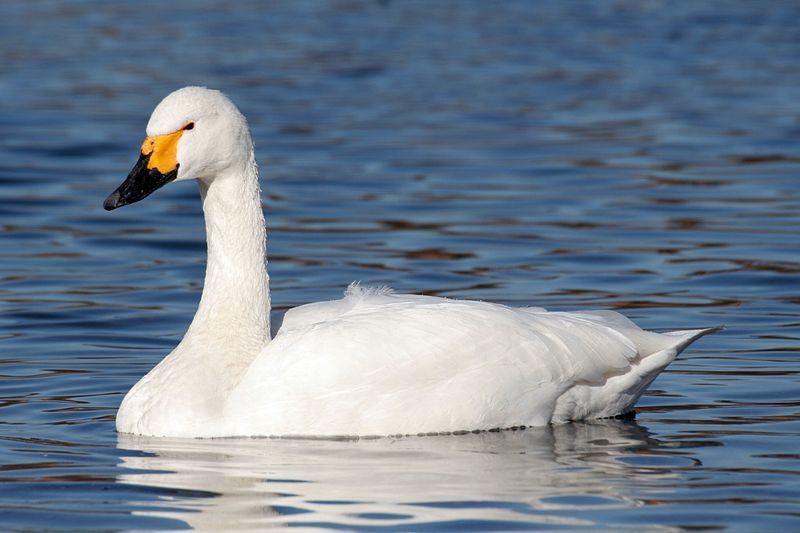
The tundra swan is a species of waterfowl found in the Holarctic region, which includes both the Palearctic and Nearctic zones. It is a small swan and is typically divided into two distinct taxa, or subspecies.
These two taxa are generally accepted as belonging to the same species, however, they can also be classified as separate species.
Bewick’s swan is found in the Palaearctic region, while the whistling swan is found in the Nearctic region. The main differences between the two subspecies are their size and plumage.
Bewick’s swan is generally smaller and has a greyish-white plumage, while the whistling swan is larger and has a white-and-black plumage.
Additionally, Bewick’s swan is known to have a more vocal call, while the whistling swan is usually quieter.In terms of behavior, the two subspecies are quite similar, both preferring shallow waters and marshes, as well as open meadows and grasslands.
They both feed on plant material, such as stems and seeds, as well as small crustaceans, insects, and other aquatic creatures. Overall, the tundra swan is a species that is divided into two distinct taxa, with each one having its own unique appearance and behavior.
Although they are usually considered to be the same species, they can also be classified as separate species, depending on the region in which they live.
| Kingdom | Animalia |
| Phylum | Chordata |
| Class | Aves |
| Order | Anseriformes |
| Family | Anatidae |
| Genus | Cygnus |
| Species | C. columbianus |
5. Gadwall
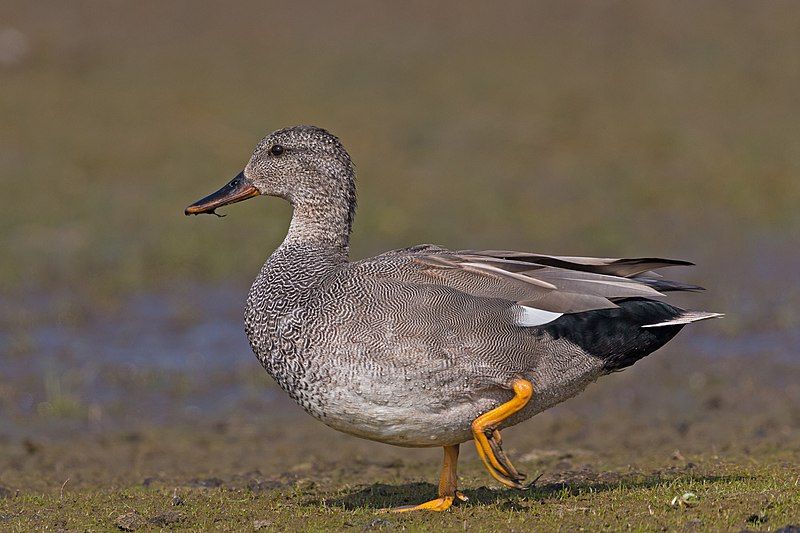
The gadwall is a species of duck found in the Anatidae family. It is a well-known and widely distributed dabbling duck, meaning it feeds by upending in shallow water and grazing in marshy areas.
It has a wide range, stretching from North America to Europe, and can be found all over the world. It is a medium-sized duck, with a wingspan of up to 45 inches. Its head, neck and wings are brown, while its belly is white.
Its back is grayish-brown with a white-bordered black patch on the shoulder. It typically lives near wetlands and rivers, and can be seen in large flocks on ponds and lakes. It feeds on aquatic vegetation, insects, worms and other small invertebrates.
The gadwall is an important species for waterfowl hunting, particularly in Canada and the United States. It is also a popular bird for birdwatchers and ornithologists, as its bright colors make it easy to identify.
| Kingdom | Animalia |
| Phylum | Chordata |
| Class | Aves |
| Order | Anseriformes |
| Family | Anatidae |
| Genus | Mareca |
| Species | M. strepera |
6. Common Merganser
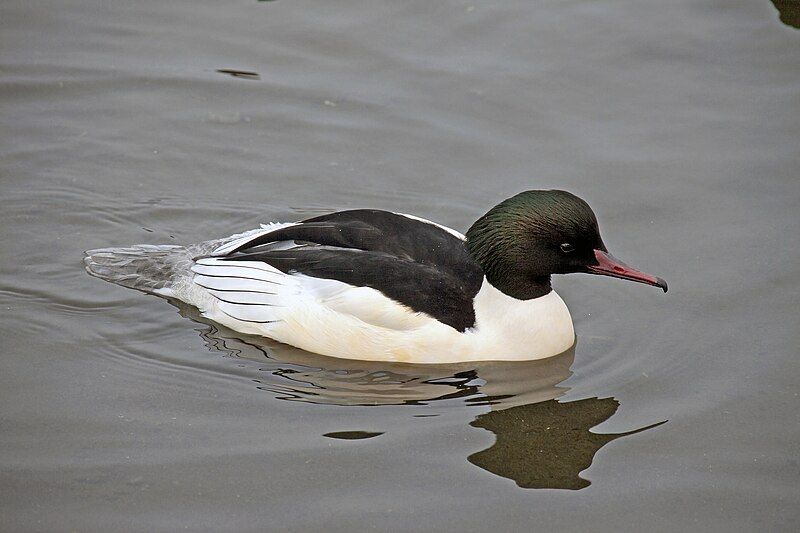
The Common Merganser or Goosander is a species of large seaduck that can be found in rivers, lakes, and other bodies of water in forested areas of Europe, Asia, and North America.
It is sometimes referred to as a “sawbill” due to its long, thin, pointed bill which it uses to catch its prey, mainly fish.
The Common Merganser is usually found in pairs or small groups and is known for its loud, echoing call. The Common Merganser builds its nest in holes in trees, usually high up in the canopy. The nest is made from a variety of materials such as grass, fur, and feathers.
The female typically lays about 8 to 10 eggs and both parents take care of the eggs until they hatch.
Once the chicks have hatched, the parents will lead them to the water to feed and teach them how to swim and fly. The Common Merganser is an important species in its ecosystems as it helps to control the population of fish and help keep them in balance.
It is also an important food source for larger predatory birds such as eagles and owls. Despite its importance, the Common Merganser is currently listed as a Species of Least Concern by the International Union for Conservation of Nature.
| Kingdom | Animalia |
| Phylum | Chordata |
| Class | Aves |
| Order | Anseriformes |
| Family | Anatidae |
| Genus | Mergus |
| Species | M. merganser |
7. Red-Breasted Merganser
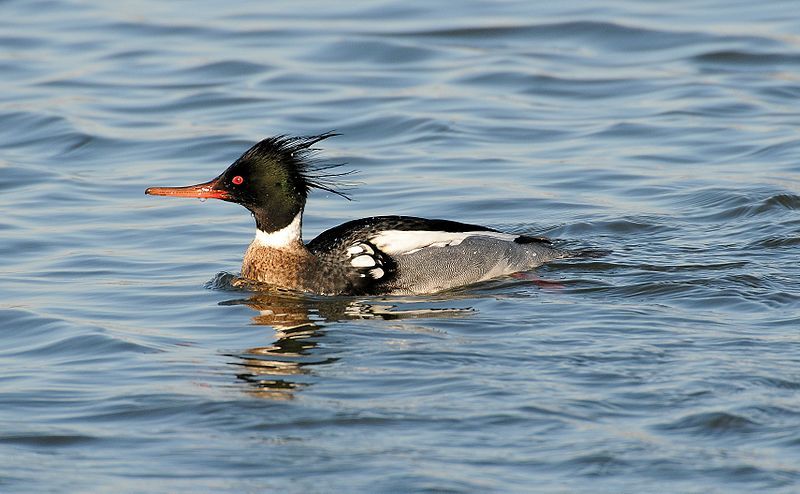
The red-breasted merganser is a species of duck that is native to many parts of the Northern Hemisphere. Generally, the male of the species has a striking red breast, which has led to its common name.
This red breast is only visible during the breeding season, when males are in their breeding plumage. At other times of the year, the red breast is hidden and the male duck looks quite different.
The female of the species has a grey-brown breast and does not display the bright red coloration that the male does. The red-breasted merganser is a large duck and can be found in many parts of North America, Europe, and Asia.
It prefers freshwater lakes and streams and is often seen diving for its food. It is a popular bird for birdwatchers and is often seen around parks and other public areas.
| Kingdom | Animalia |
| Phylum | Chordata |
| Class | Aves |
| Order | Anseriformes |
| Family | Anatidae |
| Genus | Mergus |
| Species | M. serrator |
8. Ruddy Shelduck
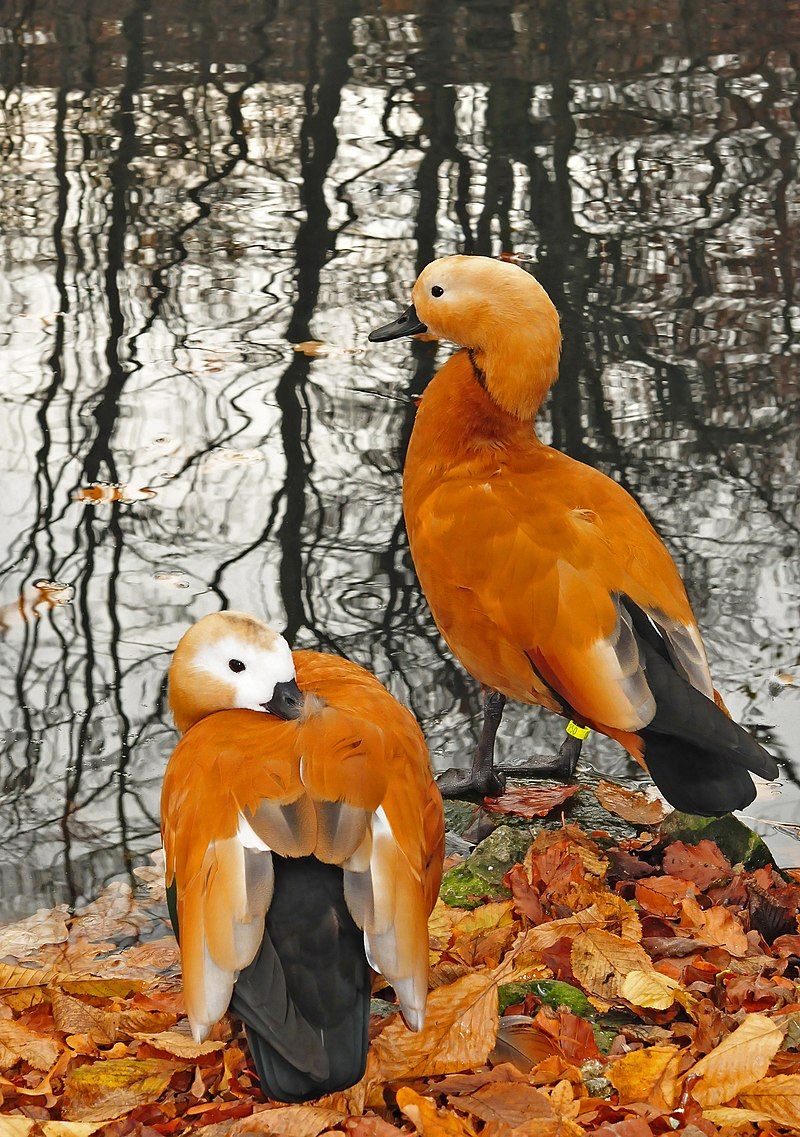
The ruddy shelduck is a beautiful waterfowl that is a part of the family Anatidae. It is native to India, although it is sometimes known there as the Brahminy duck. This bird typically measures 58 to 70 cm in length, with a wingspan of 110 to 135 cm.
Its plumage is particularly striking, with reddish-brown feathers and a white chest and head. The beak is bright yellow and the legs are a striking orange. It is an unusually large duck, with its size and bold plumage making it very easy to spot.
The ruddy shelduck can be found near wetlands, lakes, and rivers, where it feeds on seeds, aquatic plants, and mollusks. It is a social species, often found in pairs or flocks, and is known to make loud, honking calls.
The ruddy shelduck is an iconic species of India, and is often seen as a symbol of luck and abundance.
| Kingdom | Animalia |
| Phylum | Chordata |
| Class | Aves |
| Order | Anseriformes |
| Family | Anatidae |
| Genus | Tadorna |
| Species | T. ferruginea |
9. Common Shelduck
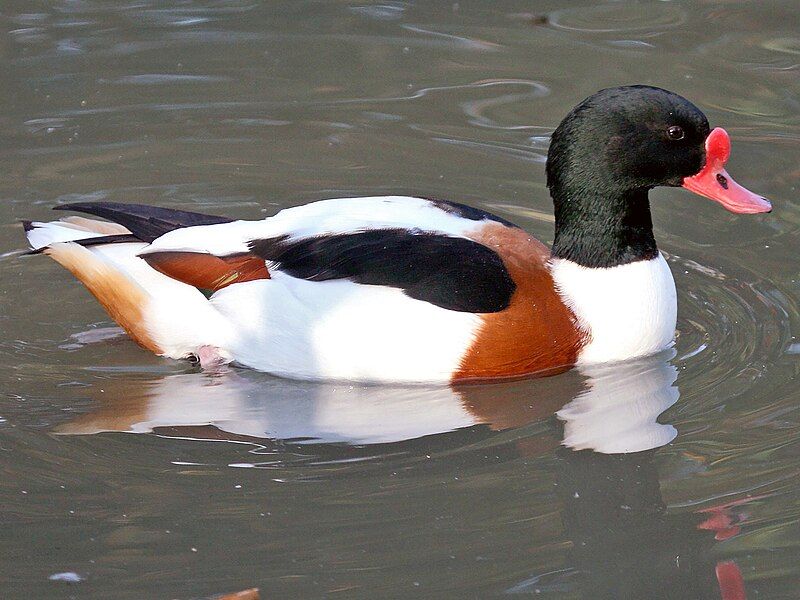
The Common Shelduck is a species of waterfowl belonging to the Tadorna genus. It is found throughout much of the Palearctic region, with a main range that stretches from Europe to Siberia. It is quite common in this area and primarily breeds in temperate climates.
During winter, the Common Shelduck migrates to subtropical regions, although it can also be found in the Maghreb region.
This species of bird is highly adaptable and is able to inhabit a variety of different climates and environments, allowing it to survive in areas with a wide range of temperatures.
Its ability to migrate also ensures that it is able to survive in areas where food resources may be limited during certain times of the year.
| Kingdom | Animalia |
| Phylum | Chordata |
| Class | Aves |
| Order | Anseriformes |
| Family | Anatidae |
| Genus | Tadorna |
| Species | T. tadorna |
10. Little Grebe
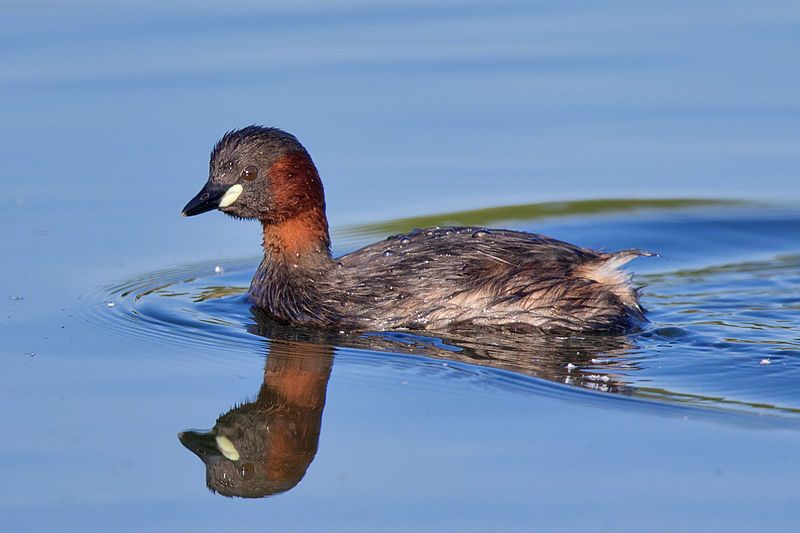
The little grebe, also known as dabchick, is a species of water birds belonging to the family of grebes. Its scientific name, Tachybaptus ruficollis, is derived from Ancient Greek and Latin words.
The genus name, Tachybaptus, is derived from the words takhus which means ‘fast’ and bapto which means ‘to sink under’.
The specific name, ruficollis, is composed of the Latin words rufus meaning ‘red’ and collis meaning ‘necked’ which is in turn derived from the Latin word collum meaning ‘neck’. The little grebe is a small aquatic bird, usually measuring around 12 to 14 inches in length.
It has a long, slender neck and a short, rounded head. Its plumage is mainly olive-brown on the upper parts and white below, with a red patch on the sides of its neck that gives it its scientific name.
It is a good swimmer and diver and feeds mainly on small aquatic animals like insects, crustaceans, and fish. The little grebe is found in most parts of the world and lives in shallow freshwater lakes and ponds.
It nests in dense vegetation near the water’s edge and builds its nest out of reeds and aquatic plants. It is an important species in the ecosystem as it provides food for many predators and controls the population of some aquatic animals.
| Kingdom | Animalia |
| Phylum | Chordata |
| Class | Aves |
| Order | Podicipediformes |
| Family | Podicipedidae |
| Genus | Tachybaptus |
| Species | T. ruficollis |
11. Common Pochard
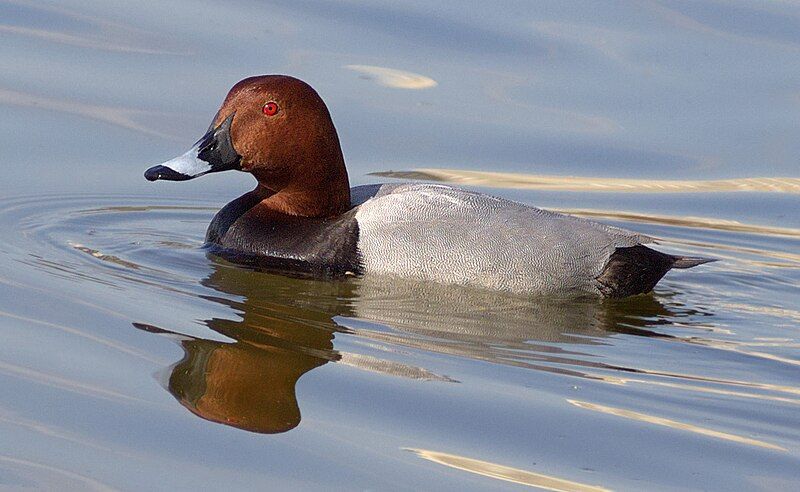
The common pochard is a medium-sized diving duck that belongs to the Aythyinae family. The scientific name of this species is derived from two sources.
The first source is the Greek word ‘aithuia’, which is an unidentified seabird mentioned by authors such as Hesychius and Aristotle. The second source is the Latin word ‘ferina’, which literally translates to “wild game”, from the Latin word ‘ferus’, meaning “wild”.
This is an appropriate name for the common pochard as it is a species of wild duck that can be found in many areas of the world.
| Kingdom | Animalia |
| Phylum | Chordata |
| Class | Aves |
| Order | Anseriformes |
| Family | Anatidae |
| Genus | Aythya |
| Species | A. ferina |
12. Ferruginous Duck
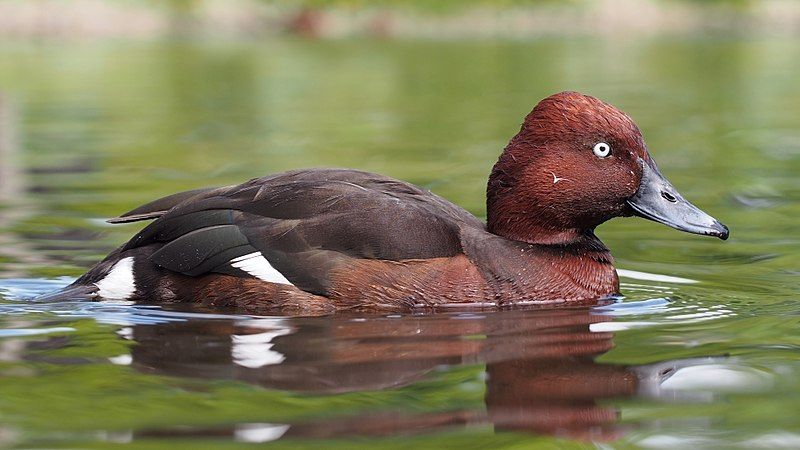
The ferruginous duck is a medium-sized diving duck from Eurasia. Its common names include ferruginous pochard, common white-eye, and white-eyed pochard.
The scientific name of this species is derived from Greek, with “aithuia” being an unidentified seabird mentioned by authors such as Hesychius and Aristotle, and “nyrok” being the Russian name for a duck. This species of duck has a rusty-brown body, with a white eye-ring and a white bill.
It has a wingspan of about 55 centimeters, and their body length ranges from 43 to 48 centimeters. The ferruginous duck prefers freshwater habitats, such as lakes, ponds, and rivers, and is usually seen in small flocks.
It mainly feeds on aquatic invertebrates, such as snails, mussels, and aquatic insects. The ferruginous duck is found in Eurasia, from northern Europe and Scandinavia, east to the Russian Far East, and south to the Mediterranean, Black Sea, and Caspian Sea.
It is listed as near threatened by the International Union for Conservation of Nature, due to the destruction of its wetland habitats and hunting. The population is estimated to be between 25,000 and 50,000 birds, with the majority of them found in Russia.
Conservation efforts are underway to protect this species, with a focus on preserving their habitats and reducing hunting pressure.
| Kingdom | Animalia |
| Phylum | Chordata |
| Class | Aves |
| Order | Anseriformes |
| Family | Anatidae |
| Genus | Aythya |
| Species | A. nyroca |
13. Black-Tailed Godwit
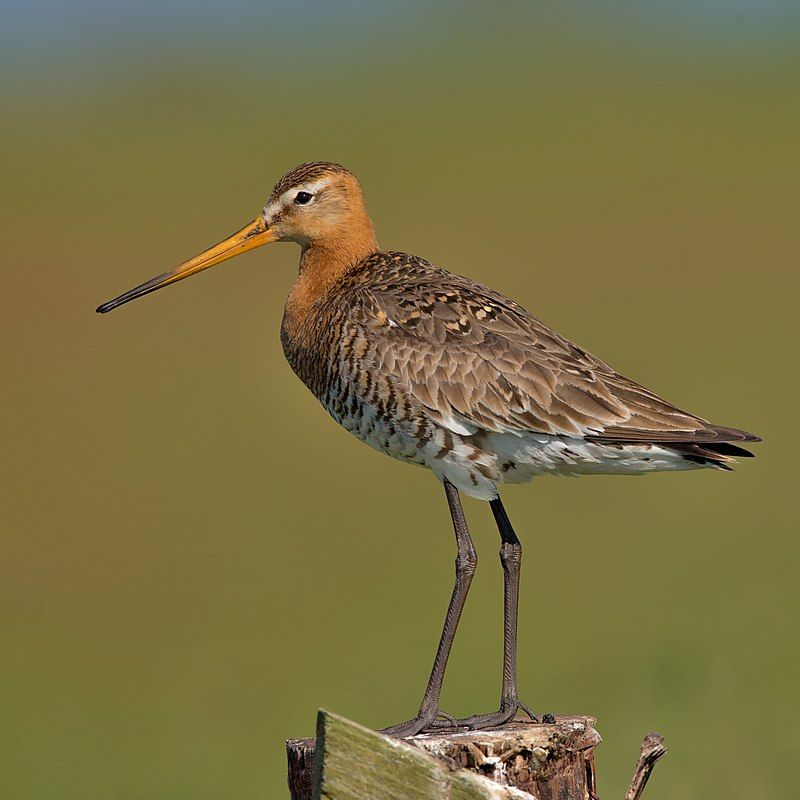
The black-tailed godwit is a species of shorebird that was first officially described by the Swedish naturalist Carl Linnaeus in 1758. It is a member of the genus Limosa, which includes all of the godwits.
This species is easily recognizable due to its large size and long legs and bill. It inhabits wetlands, mudflats and coastal areas, and is found in many areas of Europe, Asia, and North America.
The black-tailed godwit is a migratory bird, and can often be seen flying in large flocks during migration. Its diet mainly consists of insects, mollusks and crustaceans. It nests in small colonies, and both parents take part in caring for the young.
The black-tailed godwit is listed as a species of least concern on the IUCN Red List, but its population is in decline due to habitat destruction, overgrazing and other human activities.
| Kingdom | Animalia |
| Phylum | Chordata |
| Class | Aves |
| Order | Charadriiformes |
| Family | Scolopacidae |
| Genus | Limosa |
| Species | L. limosa |
14. Whimbrel
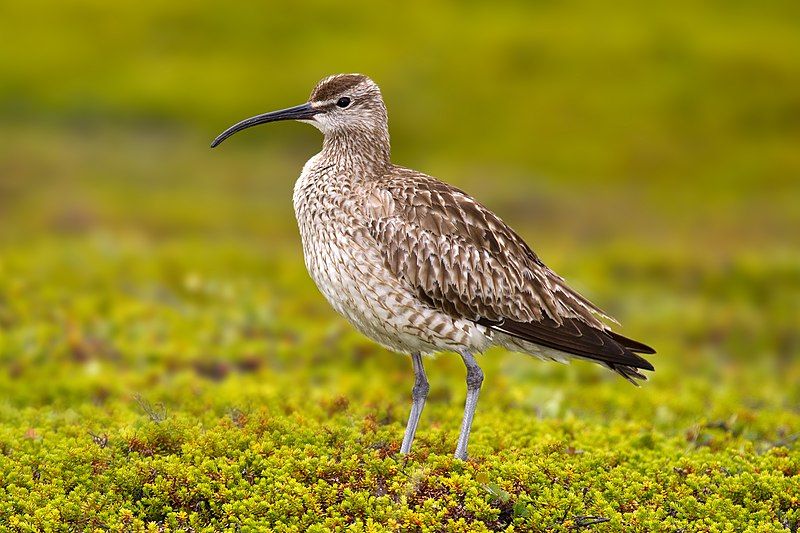
The Eurasian or common whimbrel is a species of wader in the large family Scolopacidae. It is a migratory bird, commonly known as the white-rumped whimbrel in North America.
It is a highly widespread bird, with its breeding range spanning from subarctic Asia and Europe right down to Scotland. It is one of the most common species of curlew, a type of wading bird. The Eurasian or common whimbrel is a medium-sized wader, with a wingspan of up to 70 cm.
It has long, slender legs and a long, curved bill. Its head and neck are grey-brown in colour, with its wings and tail a darker grey-brown. Its back is a russet-brown colour, and its underside is a pale grey.
The white-rumped whimbrel gets its name from the white patch on its rump. The Eurasian or common whimbrel feeds mainly on insects, worms, mollusks and crustaceans. It can also be found foraging in shallow waters, probing the mud with its bill in search of food.
It nests in a shallow depression on the ground, lined with grass and moss. The female lays a clutch of three to five eggs, which are incubated by both parents for around 23 days.
The chicks are able to fly within three weeks of hatching. The Eurasian or common whimbrel is an important species for conservation, as its population has declined over the past few decades due to habitat loss and degradation.
It is currently listed as a species of least concern by the IUCN, but conservation efforts are still needed to ensure its protection.
| Kingdom | Animalia |
| Phylum | Chordata |
| Class | Aves |
| Order | Charadriiformes |
| Family | Scolopacidae |
| Genus | Numenius |
| Species | N. phaeopus |
15. Northern Lapwing
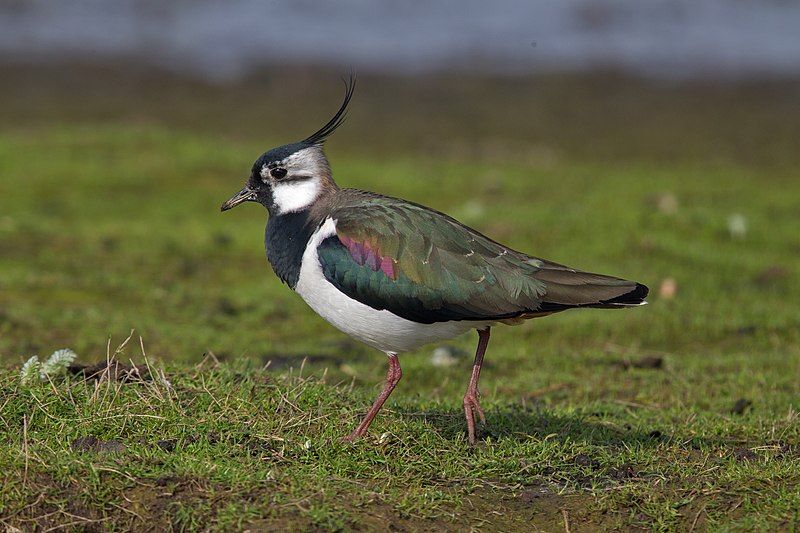
The northern lapwing is a unique bird that can be found in temperate Eurosiberia. It has a number of different names, including peewit or pewit, tuit or tewit, green plover, and pyewipe. Its scientific name is Vanellus vanellus, and it belongs to the lapwing subfamily.
The northern lapwing is a medium-sized bird, about 25-31 cm in length, and has distinct white and black markings that can easily be spotted. The wings are black with white stripes and its head is black with a white forehead.
It has a long, pointed beak and long legs that are yellow in colour. The northern lapwing is a social bird and is usually found in large flocks. It feeds mainly on insects, earthworms, and other invertebrates.
It nests on the ground, often near a body of water, and lays 3-4 eggs. The northern lapwing is an important bird in the Eurosiberian ecosystem because it helps to keep the insect populations in check. It also provides food for other animals, such as owls, hawks, and foxes.
Additionally, the northern lapwing is a symbol of the countryside and is a protected species in some parts of the world.
| Kingdom | Animalia |
| Phylum | Chordata |
| Class | Aves |
| Order | Charadriiformes |
| Family | Charadriidae |
| Genus | Vanellus |
| Species | V. vanellus |
16. Buff-Breasted Sandpiper
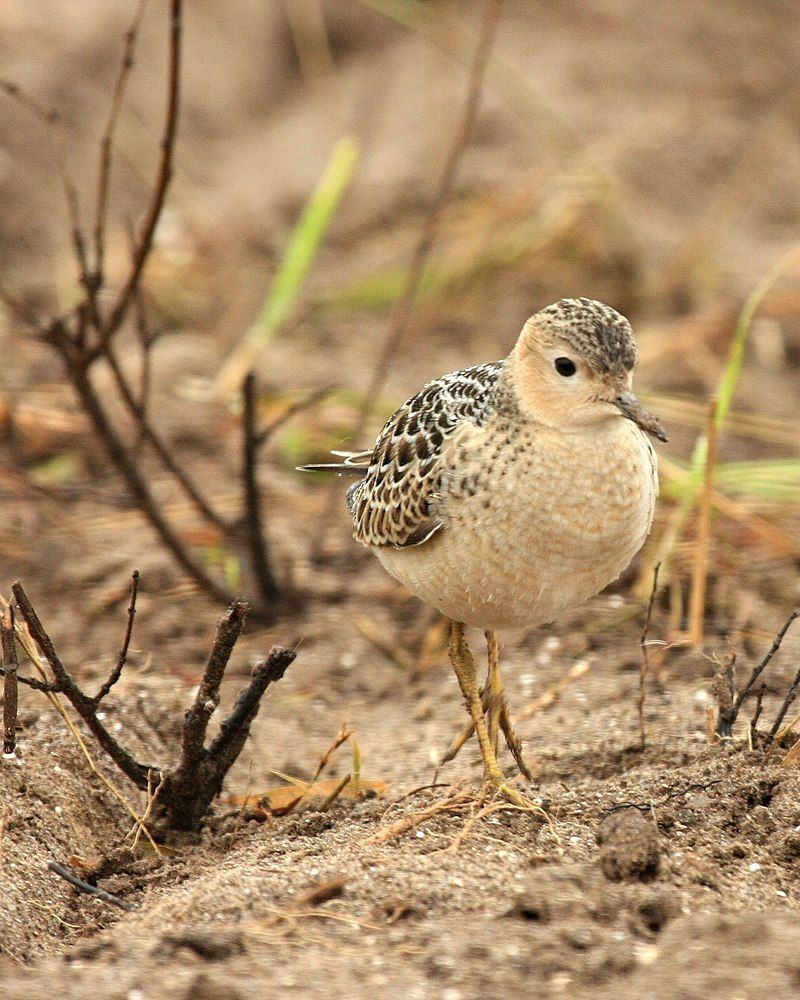
The buff-breasted sandpiper is a small shorebird which is part of the Calidrid family.
The scientific name of the species, subruficollis, is derived from two Latin words: subrufus, which means “reddish,” and collis, which means “-necked/-throated.” This refers to the fact that the buff-breasted sandpiper has reddish-colored throats and necks.
The buff-breasted sandpiper is a migratory bird, travelling great distances from its breeding grounds in North America to its wintering grounds in South America. During its migration, the birds fly in large flocks and can be found in grasslands, wetlands, and other habitats.
The buff-breasted sandpiper is an important species for conservation, as its population has been declining due to habitat loss and other factors. Conservation efforts are needed to ensure the survival of this species.
| Kingdom | Animalia |
| Phylum | Chordata |
| Class | Aves |
| Order | Charadriiformes |
| Family | Scolopacidae |
| Genus | Calidris |
| Species | C. subruficollis |
17. Common Snipe
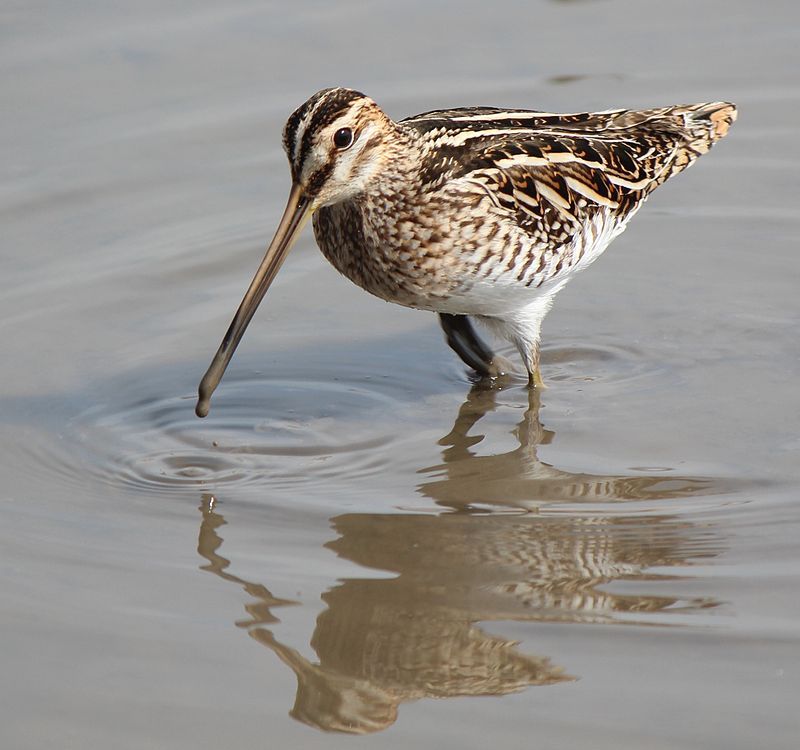
The common snipe is a small wader bird native to the Old World. It is a member of the sandpiper family and is most easily identified by its long, pointed bill and its circular wings during flight.
It has a stocky build, with a short, slightly rounded tail and a mottled brown plumage. The common snipe is a ground-dwelling bird, preferring wetlands and grasslands with plenty of cover and open water.
They are a migratory species, travelling long distances in search of the right habitat. In the winter, they fly to Africa and the Mediterranean, where they can find the ideal conditions for breeding.
During the summer, they can be found in Eurasia, as far north as Scandinavia and Britain. The common snipe is an elusive bird and is rarely seen in the open. It prefers to hide in dense vegetation and rely on its camouflage to keep it safe from predators.
Its diet consists of insects, worms and other invertebrates, which it captures by probing the mud with its long bill.
| Kingdom | Animalia |
| Phylum | Chordata |
| Class | Aves |
| Order | Charadriiformes |
| Family | Scolopacidae |
| Genus | Gallinago |
| Species | G. gallinago |
18. Whooper Swan
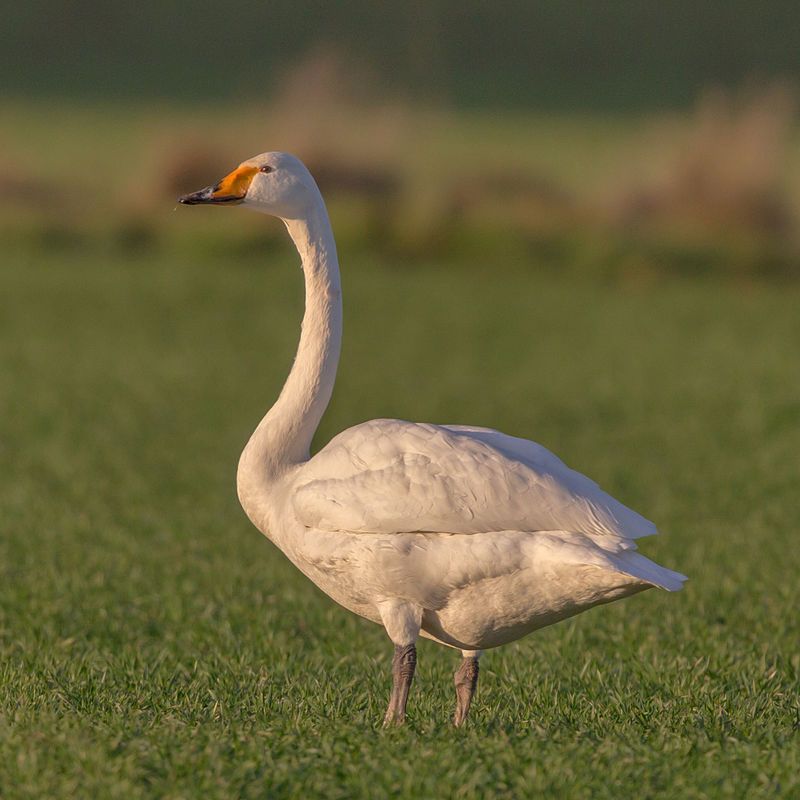
The whooper swan is a species of large birds that are native to the northern hemisphere. It is also known as the common swan and is the type species for the genus Cygnus. It is closely related to the North American trumpeter swan but is a distinct species in its own right.
The whooper swan is known for its elegant appearance and graceful movements. It has a long, slender neck and a large wingspan, which makes it stand out in the sky. Its plumage is white with black and yellow markings, and its bill is yellow with a black tip.
The whooper swan usually inhabits wetlands and other shallow bodies of water, where it feeds on aquatic plants, insects, and other small animals. It is also an important source of food for other wildlife, such as hawks and owls.
The whooper swan is an iconic species of the northern hemisphere, and it is an important part of the ecosystems it inhabits.
| Kingdom | Animalia |
| Phylum | Chordata |
| Class | Aves |
| Order | Anseriformes |
| Family | Anatidae |
| Genus | Cygnus |
| Species | C. cygnus |
19. Garganey
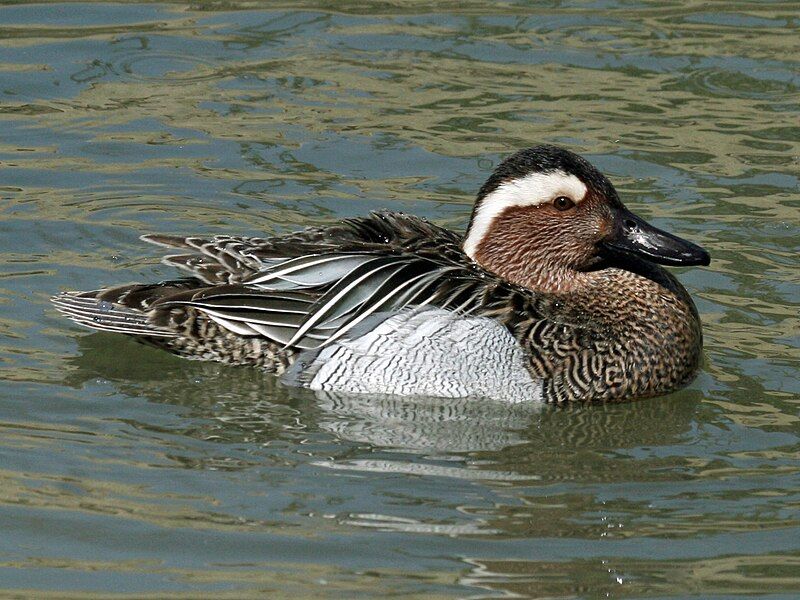
The garganey is a species of small dabbling duck that is native to much of Europe and the Palearctic region. It is a strictly migratory bird, with the entire population undertaking a long journey during the northern hemisphere winter.
This journey takes them to warmer climates such as southern Africa, India, Bangladesh and Australasia.
Here, they often flock together in large numbers in order to take advantage of better food sources and a milder climate. The garganey is a unique species among ducks in that it is one of the few migratory species.
This means that they are able to adapt to changing conditions by making the journey south every winter.
This allows them to survive in areas where the climate can be harsh and food sources can be scarce. The garganey is an important species as it helps to maintain the balance of nature in its native habitats.
By migrating to warmer climates, they are able to bring much-needed nutrients back to their home range.
They also provide a vital food source for predators and scavengers in their winter habitats, such as the African Fish Eagle. Overall, the garganey is an impressive species of duck that helps to contribute to the balance of nature in the ecosystems it inhabits.
Its ability to migrate and adapt to changing conditions makes it an important part of the natural world.
| Kingdom | Animalia |
| Phylum | Chordata |
| Class | Aves |
| Order | Anseriformes |
| Family | Anatidae |
| Genus | Spatula |
| Species | S. querquedula |
20. Glossy Ibis
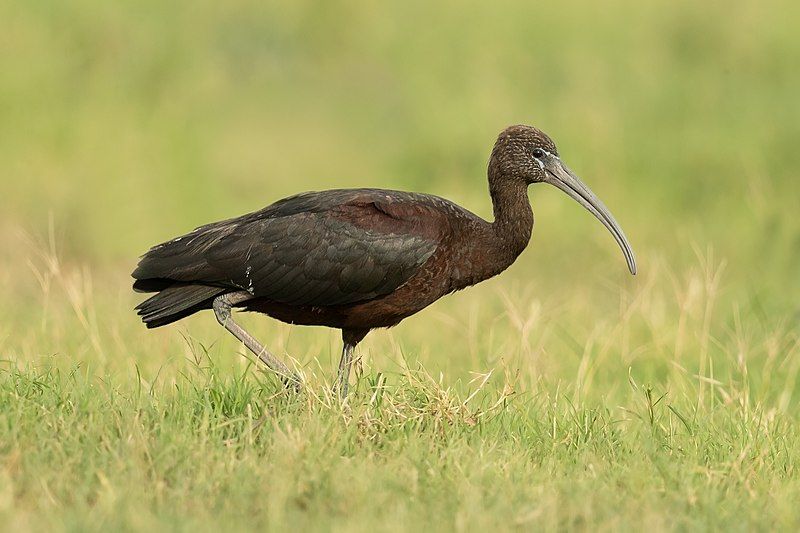
The glossy ibis is a species of water bird found in the order Pelecaniformes and the Threskiornithidae family. Its scientific name, Plegadis falcinellus, is derived from Ancient Greek and Latin words meaning “sickle”, referring to the curved shape of its beak.
The glossy ibis is a medium-sized wading bird with a distinctive long bill and a blackish-brown body with a metallic green sheen. It has a wingspan of up to 75 cm, and is often seen near wetlands, swamps, marshes, and shallow lakes.
The glossy ibis is an omnivorous bird, and its diet consists of a variety of aquatic creatures such as crayfish, frogs, and mollusks, as well as small insects and some plant material. The glossy ibis will also scavenge for carrion and other dead animals.
The glossy ibis is known for its social behavior, often seen in large flocks, and they can travel long distances in search of food and suitable nesting sites. It is a common species and is found on every continent except Antarctica.
| Kingdom | Animalia |
| Phylum | Chordata |
| Class | Aves |
| Order | Pelecaniformes |
| Family | Threskiornithidae |
| Genus | Plegadis |
| Species | P. falcinellus |
21. Hazel Grouse
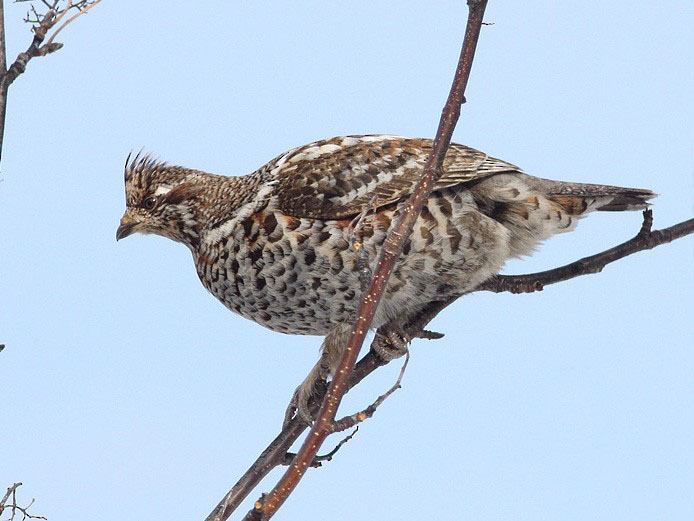
Source: ebird.org
The hazel grouse, sometimes known as the hazel hen, is a type of bird that belongs to the grouse family. This species is known to be quite sedentary, meaning that it stays in the same area and does not migrate.
It is known to breed across the Palearctic, which is a large geographical region that spans from eastern and central Europe all the way to Hokkaido in Japan.
It prefers to breed in dense, damp, mixed coniferous woodlands, particularly in areas that have some spruce trees. This species of bird is quite small in size and can be identified by its plump body, short, rounded wings, and its mottled orange-brown coloration.
It has a black and white tail and its facial feathers are greyish-white in color. Its diet consists mainly of a variety of seeds, insects, and fruits. The hazel grouse is an important species due to its role in maintaining the balance of the forest ecosystem.
It is an important species for the food chain, serving as a keystone species that other animals rely on for food.
It also helps to disperse seeds, which helps promote the growth of new trees, plants, and bushes. Overall, the hazel grouse is a fascinating species that plays an important role in the environment.
It is a species that requires protection in order to ensure its survival and the balance of the forest ecosystem.
| Kingdom | Animalia |
| Phylum | Chordata |
| Class | Aves |
| Order | Galliformes |
| Family | Phasianidae |
| Genus | Tetrastes |
| Species | T. bonasia |
22. Ruddy Duck
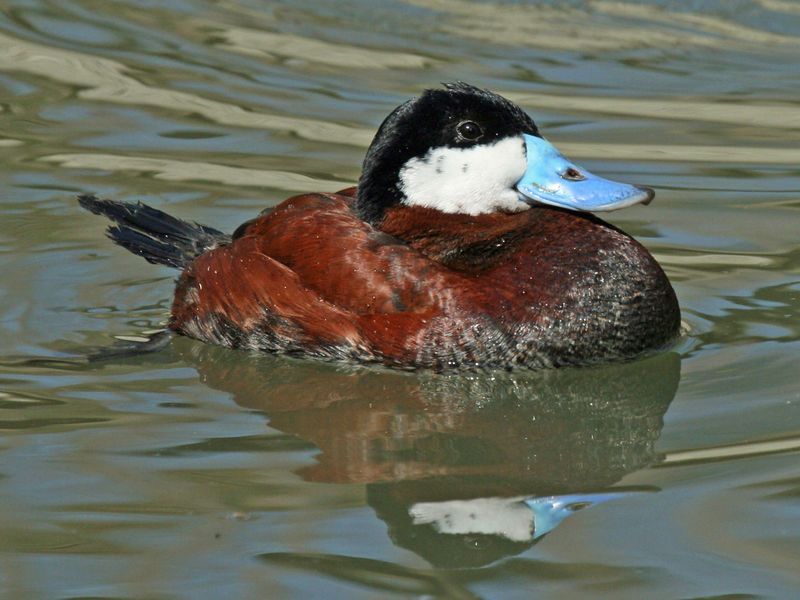
The ruddy duck is a species of duck that is native to North America. It is part of the family of stiff-tailed ducks, and its Latin name – Oxyura jamaicensis – reflects its appearance.
The genus name, Oxyura, comes from the Ancient Greek words oxus meaning “sharp” and oura meaning “tail”, describing the duck’s stiff tail feathers. The species name, jamaicensis, literally translates to “from Jamaica”, indicating its geographic origin.
This species of duck is renowned for its unique physical features. It has a bright rufous-brown colour – hence the name – and a distinct white face. Its stiff tail feathers are a distinguishing feature, which can be easily seen when the duck is swimming.
The ruddy duck is a relatively small species, measuring between 16 to 22 inches in length and weighing up to 2.6 pounds. The ruddy duck is a migratory species, and it is found in wetlands across North America, particularly in the Great Lakes region.
During the breeding season, it can be found in freshwater marshes, ponds and lakes. It feeds on aquatic invertebrates, such as snails, and it is known for its peculiar courtship displays.
Its population is considered to be stable, and it is currently not considered to be at risk of extinction.
| Kingdom | Animalia |
| Phylum | Chordata |
| Class | Aves |
| Order | Anseriformes |
| Family | Anatidae |
| Genus | Oxyura |
| Species | O. jamaicensis |
23. Egyptian Goose
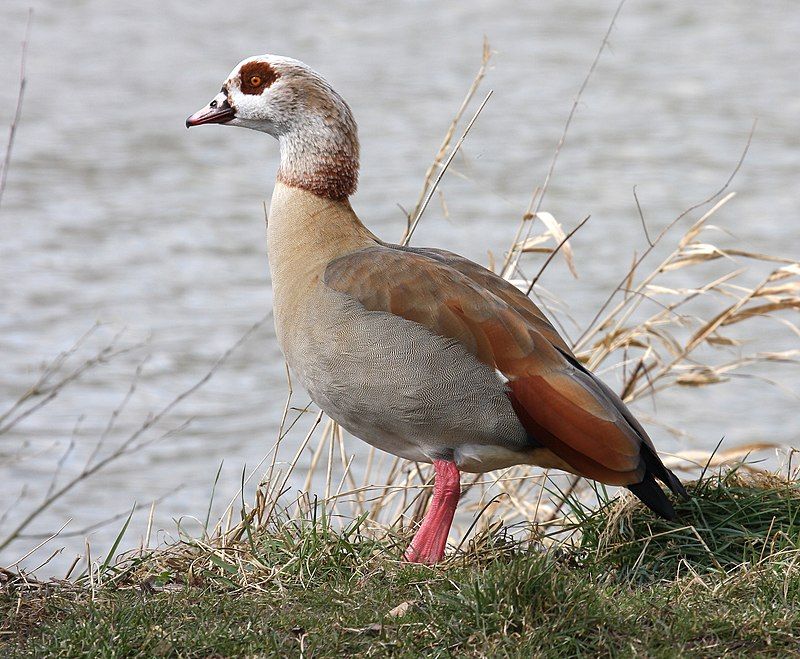
The Egyptian goose is a species of waterfowl that is native to Africa. They are part of the duck family, Anatidae, and are particularly known for their striking plumage.
Due to their attractive appearance, they have been introduced to other parts of the world, including Europe, the United States, and other countries outside their natural range.
This species of goose has become popular as an ornamental bird, which is why they have been introduced to many other places. In their natural range, they inhabit wetlands, floodplains, marshes, and other aquatic habitats.
They feed on aquatic vegetation, seeds, insects, and small animals. Egyptian geese are monogamous and form long-term pair bonds. They are known to be quite vocal, making a variety of honking and screeching noises.
They also perform courtship displays in which pairs will bob their heads, stretch their wings, and run around in circles around each other. These birds are classified as a species of least concern by the IUCN Red List.
Despite being introduced to other parts of the world, their population is stable and considered to be of low conservation concern.
| Kingdom | Animalia |
| Phylum | Chordata |
| Class | Aves |
| Order | Anseriformes |
| Family | Anatidae |
| Genus | Alopochen |
| Species | A. aegyptiaca |
Conclusion
Birds in South Tyrol are a vital part of the region’s rich biodiversity and contribute to the overall health of the environment.
The region is home to many different species, and the local population, as well as tourists, can experience the beauty of the birds and benefit from the ecosystem services they provide.
With proper management and conservation efforts, the birds of South Tyrol can continue to thrive and provide a source of natural wonder and enjoyment to visitors for years to come.